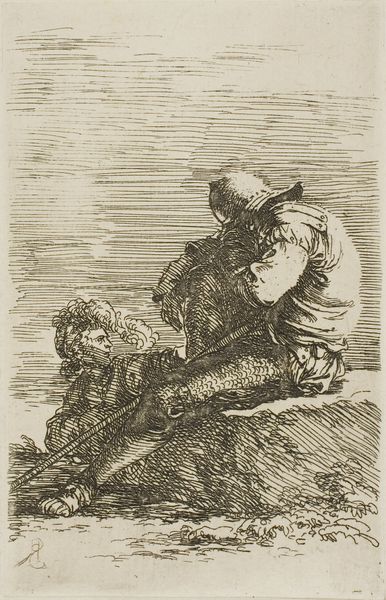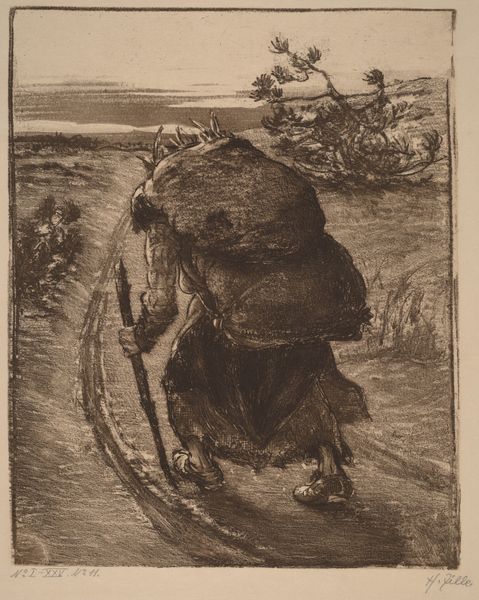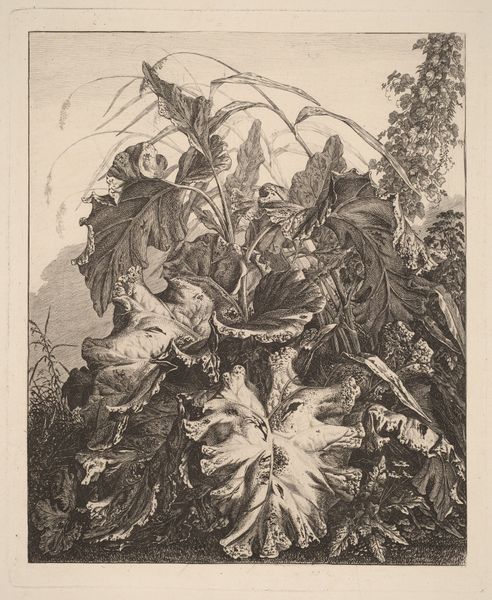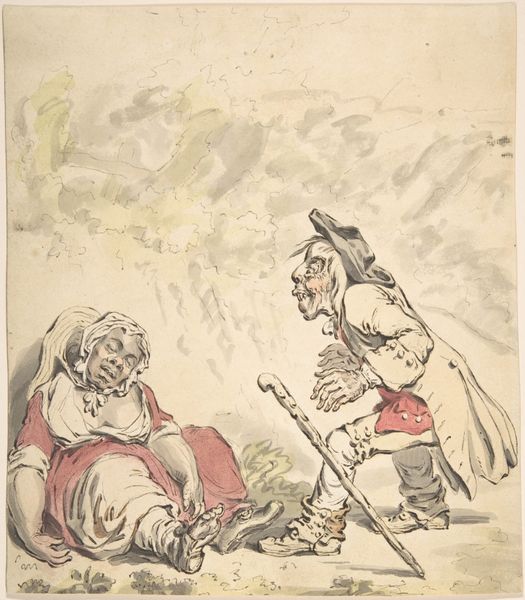
Dimensions: image: 30.2 x 20.9 cm (11 7/8 x 8 1/4 in.) sheet: 40.4 x 28.5 cm (15 7/8 x 11 1/4 in.)
Copyright: National Gallery of Art: CC0 1.0
Célestin Nanteuil created this lithograph of Sancho Panza in the 19th century. Lithography is a printmaking process that relies on the contrast between oily and water-based substances. The artist draws on a flat stone or metal plate with a greasy medium, then treats the surface so that ink adheres only to the drawn areas. The resulting print, like this one, can have a velvety texture, capturing fine details and tonal gradations. Look closely, and you can see the rich blacks and subtle grays that bring Sancho Panza's weary form to life. The material qualities of lithography perfectly suit the subject. Prints like this were relatively inexpensive to produce, making art accessible to a wider audience. Yet, it’s easy to forget the labor and skill involved: from quarrying the limestone, to the expertise of the printer, lithography depended on a whole network of skilled practitioners. So, the next time you see a print, think about the many hands that contributed to its creation, blurring the lines between art, craft, and industry.
Comments
No comments
Be the first to comment and join the conversation on the ultimate creative platform.













